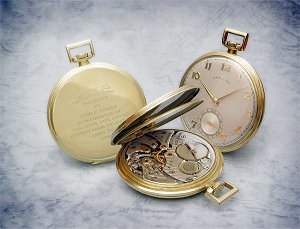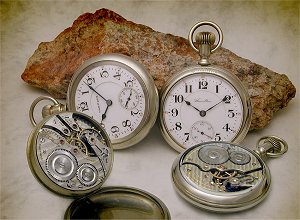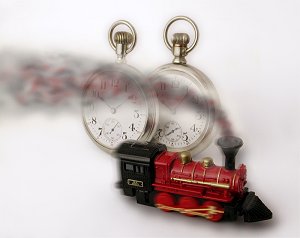

Composite watch images are made by combining two or more photos. The intention is to present a view not possible in a straight photo. For example, below I have used the technique to show the front, back, and movement of the same watch, all in the one image. The technique can also be used to introduce other elements into an image.

The subject of this image is a 1950's Hamilton Grade 921 pocket watch. The watch has a high grade movement combined with Hamilton's distinctive applied numeral dial and a presentation engraving on the caseback. My intention was to create a composite image that displayed all three elements.
Click on the photo for a description of how the image was created, and see a larger size version.

Here are two 16-size Railroad Grade US pocket watches, a 1910 Hamilton Grade 992L on the right and a 1916 Hampden Wm. McKinley on the right. My intention was to create an image that combined both dial and movement shots of the watches.
Click on the photo for a description of how the image was created, and see a larger size version.

This image is a bit different to the preceding composites. I have used the composite technique to introduce an outside element into the scene, in this case the smoke from the locomotive. The intention was to create an image combining Railroad Grade pocket watches with a prop toy steam locomotive which appeared to be running.
Click on the photo for a description of how the image was created, and see a larger size version.
Below is another example of a composite watch image. This time I wanted to show the Cyma wristwatch and its movement. I shot the watch and prop peppers first, and then the movement shot, combining them as per the previous examples.
CLICK HERE to return to Mucking About.
Copyright 2005 Paul Delury